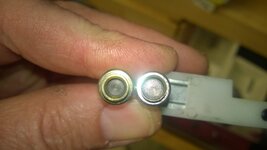Bronze Supporter
- Messages
- 5,083
- Reactions
- 9,009
OH no - not another can of worms!The OP has a Dillon Square Deal, which only reloads pistol cartridges. Assuming he is using carbide dies, no case lube. Let's not confuse the poor lad.
I use One Shot as a case lube for 9mm. It most definitely makes a difference in force needed on the sizing die. My technique is two squirts into a 1 gallon plastic bag and then add about 100 cases into the bag. It then gets shaken up and rolled for about a minute. By squirting in the bag instead of on the brass, you're reducing the amount of lube inside the cases. You'll know if you're using too much if the cases feel exceptionally greasy.
Like many parts of this hobby, it's a personal preference. Give it a try to see if it makes a difference for you.













